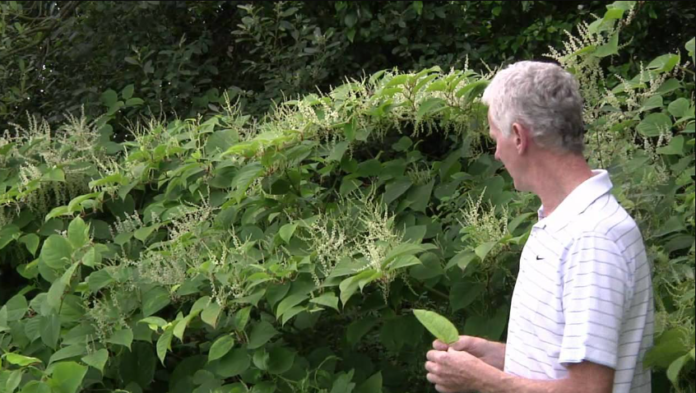Japanese Knotweed (Fallopia japonica) is an invasive plant species that has become a significant concern in Ireland due to its aggressive growth and destructive nature. Originating from East Asia, this resilient plant has found its way into various parts of Ireland, posing a threat to native ecosystems, infrastructure, and property values. If left unchecked, Japanese Knotweed can spread rapidly, causing extensive damage to roads, buildings, and natural habitats. However, with proper knowledge and effective strategies, it is possible to manage and eradicate this invasive species. In this guide, we’ll explore various methods to control and eliminate Japanese Knotweed in Ireland.
Understanding Japanese Knotweed:
Before delving into eradication methods for removal of Japanese knotweed in Ireland, it’s crucial to understand the characteristics of Japanese Knotweed:
- Appearance: Japanese Knotweed is a perennial herbaceous plant with bamboo-like stems that can grow up to 3 meters in height. Its leaves are broad, heart-shaped, and arranged alternately along the stems. During the late summer and early autumn, the plant produces clusters of small, creamy-white flowers.
- Aggressive Growth: Japanese Knotweed is known for its rapid and vigorous growth, capable of spreading quickly through its rhizomes (underground stems). Even a small fragment of rhizome can regenerate into a new plant, making it highly resilient and difficult to eradicate.
- Impact: The presence of Japanese Knotweed can have severe implications for both natural ecosystems and built environments. Its dense growth can outcompete native vegetation, leading to biodiversity loss. Additionally, its extensive root system can penetrate through concrete, asphalt, and building foundations, causing structural damage.
Effective Strategies for Japanese Knotweed Control:
- Early Detection and Reporting: Timely identification of Japanese Knotweed is essential for effective control. Familiarize yourself with its distinct features and regularly inspect your property or surrounding areas for signs of infestation. If you suspect the presence of Japanese Knotweed, report it to your local authorities or environmental agencies.
- Professional Consultation: Dealing with Japanese Knotweed often requires professional expertise. Consult with qualified invasive species control specialists or environmental consultants who can assess the extent of the infestation and recommend appropriate management strategies.
- Chemical Treatment: Herbicide application is a commonly used method for controlling Japanese Knotweed. Glyphosate-based herbicides are often effective, especially when applied during the plant’s active growth phase in late spring or early summer. However, chemical treatment should be conducted with caution to minimize harm to non-target species and the environment, and it may require multiple applications over several years for complete eradication.
- Mechanical Control: Mechanical methods, such as cutting, mowing, or digging, can help reduce the spread of Japanese Knotweed. However, these methods are labor-intensive and may inadvertently spread plant fragments, leading to further infestation. Mechanical control is most effective when combined with other management techniques.
- Barrier Systems: Installing root barriers or membranes can help contain the spread of Japanese Knotweed by preventing its rhizomes from spreading underground. This method is particularly useful for protecting buildings, roads, and other infrastructure from damage caused by the plant’s aggressive root system.
- Biocontrol: Biological control methods, such as introducing natural predators or pathogens specific to Japanese Knotweed, are being researched as potential long-term solutions. However, biocontrol measures require extensive testing to ensure they do not harm native flora and fauna.
- Legal Considerations: In Ireland, Japanese Knotweed is classified as a “harmful organism” under the Wildlife Acts 1976 to 2018. Therefore, there are legal obligations to prevent its spread under these acts. It is essential to familiarize yourself with relevant regulations and seek appropriate permissions before undertaking any control or eradication activities.
Conclusion:
Japanese Knotweed poses a significant challenge for landowners, conservationists, and authorities in Ireland. However, with proactive management and a combination of control methods, it is possible to contain and eradicate this invasive species. Early detection, professional consultation, and a systematic approach to control are key to effectively managing Japanese Knotweed infestations. By taking concerted action, we can protect our native ecosystems, preserve biodiversity, and safeguard our built environment from the destructive impact of Japanese Knotweed. Let’s work together to combat this invasive threat and ensure a healthier, more resilient landscape for future generations.

